Santiago Bernabéu Stadium, often referred to simply as the Bernabéu, is a hallowed ground for football enthusiasts worldwide.
Home to Real Madrid CF, this legendary stadium holds a special place in the hearts of fans and is an emblem of the club’s rich history.
In this article, we’ll explore some fascinating facts about Santiago Bernabeu Stadium that will undoubtedly amaze you.
Santiago Bernabeu Stadium History
Santiago Bernabéu Stadium Madrid, the hallowed ground of Real Madrid, has a rich history and an illustrious roster of players.
Let’s look closer at the facts and history of Santiago Bernabeu Stadium.
The Vision Begins in 1944
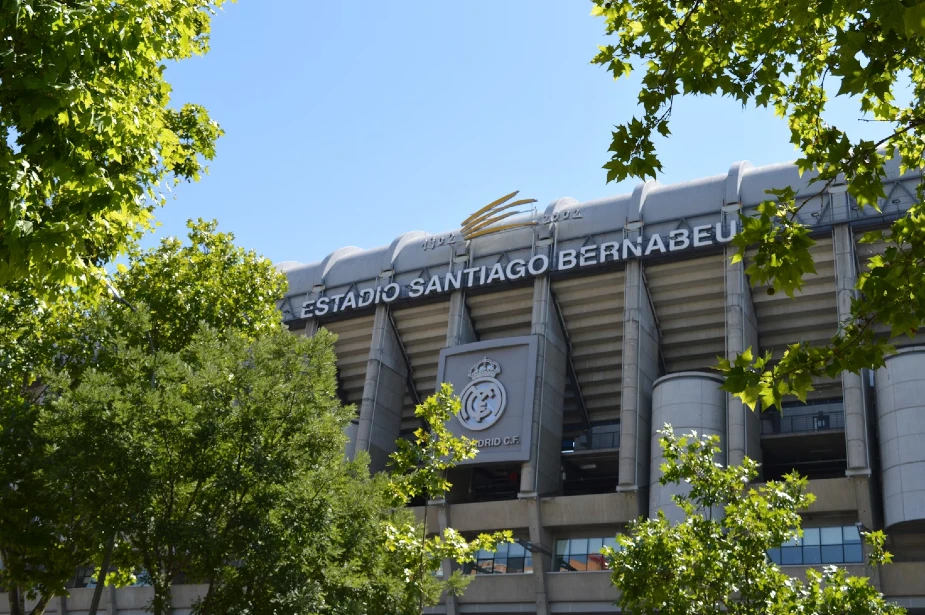
Santiago Bernabéu, a former Real Madrid player who was the club’s president, had a visionary idea for this iconic stadium.
He recognized the need for a new stadium and, with a loan, secured the land next to the old Chamartín Stadium.
The construction of Bernabeu Stadium, which commenced in September 1944, was led by Architects Manuel Munoz Monasterio and Luis Alemany Soler.
Triumph on Opening Day
Santiago Bernabéu Stadium officially opened on December 14, 1947.
Real Madrid faced off against the Portuguese team Os Belenenses in an inaugural match.
The stadium’s first goal came courtesy of Real Madrid striker Sabino Barinaga, who scored a header.
The first official match in the stadium took place on December 28, 1947, against Atletico de Bilbao.
Name Change to Honor a Legend
Originally known as the Nuevo Estadio Chamartín, the stadium underwent a significant transformation in 1955.
The change was a heartfelt tribute to the club’s iconic president, Santiago Bernabéu.
The stadium’s name was changed to Estadio Santiago Bernabeu to honor the man whose vision had given birth to the stadium.
Plan your visit to the Santiago Bernabeu Stadium in Madrid and learn the facts firsthand.
Book tickets for Bernabéu to enjoy priority access and explore Real Madrid’s legendary heritage.
Santiago Bernabeu Stadium renovation
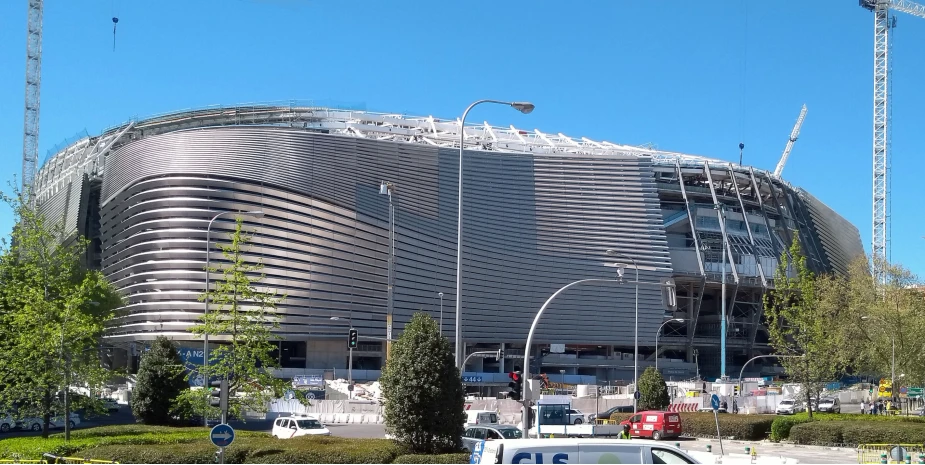
The stadium’s evolution continued, with the construction of additional seating in 1955, expanding its capacity to host 125,000 spectators.
The installation of floodlights in 1957 allowed for nighttime games.
By 1965, the club’s offices had moved to the stadium, marking another milestone.
Notably, the first electronic scoreboard was introduced inside the stadium in 1972.
Ongoing Transformation
Santiago Bernabéu Stadium is amid a transformative journey expected to conclude in the coming years.
The transformation aims to elevate it into one of the world’s premier sporting venues.
The Santiago Bernabeu new stadium will attract tourists and feature a shopping center, additional restaurants, and a hotel, some with rooms offering breathtaking pitch views.
New Ring and Safety Measures
Safety became a priority after tragic incidents like the Hillsborough and Heysel Dramas, a fatal human crush.
The Union of European Football Associations (UEFA) strict safety guidelines included shortcuts to different stadium sections and seating for all spectators.
A theater on the west side, a new commercial center, and upgraded seating with an 87-degree tilt were introduced.
Four new towers and an additional ring were integrated, doubling the stadium’s height to 45 meters and bringing the capacity to 74,328 spectators.
Cutting-Edge Renovations
Among the Santiago Bernabeu Stadium facts is its most recent renovation project, which was completed in 2019 and focused on upgrading the stadium’s facilities to world-class standards.
Key enhancements included a retractable roof, a state-of-the-art LED lighting system, and improved seating and hospitality areas.
These upgrades ensure that Santiago Bernabéu remains a premier destination for football fans and event enthusiasts.
As of its most recent renovation, the stadium accommodates 81,044 spectators.
This capacity has evolved through various renovations and expansions, making it one of Europe’s largest football stadiums.
Transformations and World Cups
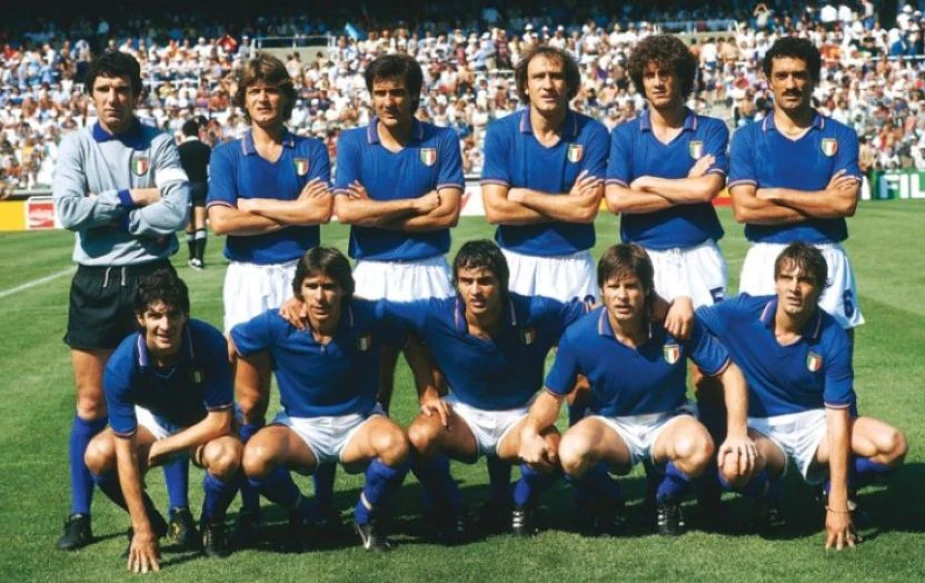
In 1982, Santiago Bernabéu Stadium was selected to host the FIFA World Cups.
To meet FIFA’s criteria, a roof was constructed around two-thirds of the seating area, leaving the east side uncovered.
Although this reduced the stadium’s capacity to 98,000 spectators, it enabled nighttime football games under the floodlights.
The stadium hosted four World Cup matches, including the prestigious FIFA World Cup final.
One of the most unforgettable stadium matches occurred during the 1982 FIFA World Cup final, where Italy triumphed over West Germany.
The roar of the crowd, the pulsating energy, and the drama on the field etched this event into football folklore.
First Giant Screen
In 1992, Santiago Bernabéu Stadium became the first football stadium in Spain to install a giant screen.
Measuring an impressive 96 square meters, this screen is located at the south end of the stadium.
It is a dynamic platform to display match information, replays, and other engaging content during games, enhancing the overall spectator experience.
The Hybrid Pitch
The stadium’s pitch is a hybrid grass surface, seamlessly blending natural grass with synthetic fibers.
This innovative approach ensures the pitch remains in top condition, even during matches or training sessions, even with heavy use.
The hybrid grass surface was installed in 2004, and several high-profile stadiums worldwide adopted it.
Explore the Santiago Stadium with ease. With the skip-the-line entry ticket, bypass the queues and delve into the captivating world of Real Madrid at Santiago Bernabéu Stadium.
Santiago Bernabéu Stadium Seating
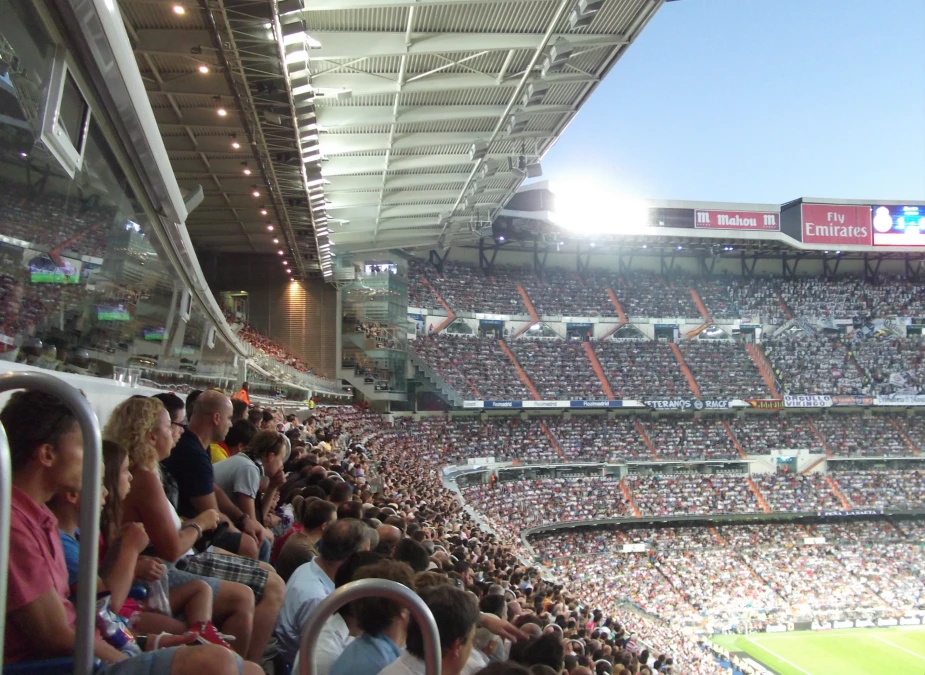
The seating configuration within Santiago Bernabéu Stadium is designed to offer an exceptional viewing experience to every spectator.
The stadium features four tiers, with the lower tier providing the closest proximity to the pitch.
This meticulous design ensures that fans from all vantage points enjoy an unobstructed view of the action, creating an electric atmosphere during matches.
Santiago Bernabéu stadium capacity
In the early 2000s, under the visionary leadership of Florentino Perez, Santiago Bernabéu Stadium underwent a renovation between 2001 and 2006.
This ambitious project introduced a new audio system, bars, VIP areas, and an east-side expansion, increasing the Bernabeu stadium seats.
The new Bernabeu stadium capacity now proudly stands at 81,044 spectators.
Santiago Bernabéu Stadium Seating Chart
To plan your visit to Santiago Bernabéu Stadium, it’s beneficial to consult the seating chart.
This chart visually represents the stadium’s layout, allowing you to select seats that suit your preferences.
Santiago Bernabeu Stadium tour
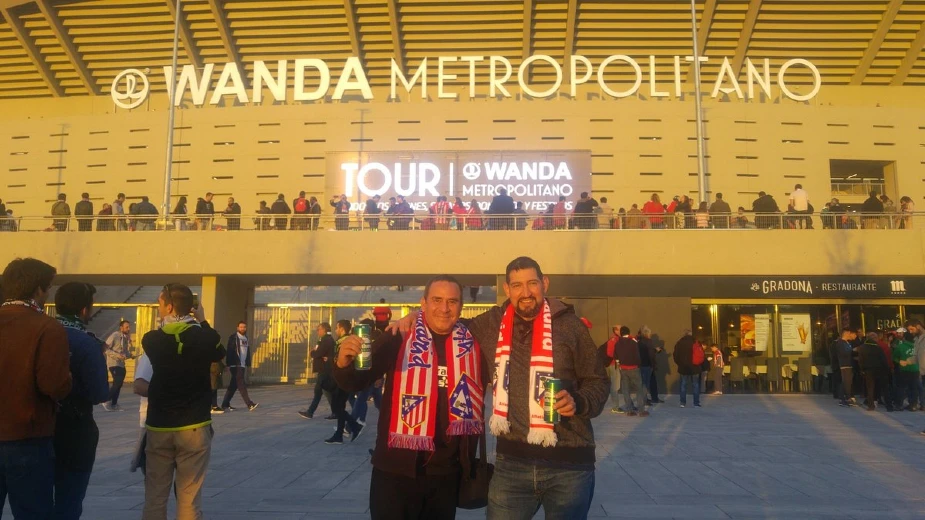
For football fans and tourists, embarking on a Santiago Bernabéu Stadium tour is an unforgettable experience.
The stadium tours grant access to the stadium’s inner areas, including the players’ tunnel, the trophy room showcasing Real Madrid’s rich history, and even the hallowed pitch itself.
Consider joining a stadium tour for a behind-the-scenes glimpse into the inner workings of Santiago Bernabéu Stadium.
Walk in the footsteps of football legends as you explore the player’s tunnel, the locker rooms, and the VIP areas.
Learn about the stadium’s storied history and iconic moments from knowledgeable guides who share their passion for the beautiful game.
Here’s what you can expect on the Santiago Bernabeu Stadium tour.
Real Madrid Museum
Inside Santiago Bernabéu Stadium lies the Real Madrid Museum, a treasure trove of football history.
Explore the captivating exhibits, iconic jerseys, and the Legends Corridor that pays homage to the club’s greatest heroes.
It’s a journey through time that every football enthusiast will cherish.
Have a look at what you can expect at the Real Madrid Museum.
Legends Corridor
As you explore Santiago Bernabéu Stadium, don’t miss the Legends Corridor.
This unique feature is a pathway that encircles the stadium’s perimeter, adorned with statues and plaques celebrating some of Real Madrid’s greatest players and coaches.
Established in 2008, the Legends Corridor pays tribute to 29 football luminaries with statues and 70 plaques.
It’s a powerful reminder of the club’s rich heritage and the legends gracing its hallowed pitch.
VIP Box
The stadium features a VIP box that has welcomed an array of notable guests, including Pope John Paul II, King Juan Carlos I of Spain, and former US President Barack Obama.
The VIP box on the stadium’s east side offers stunning pitch views.
It’s the preferred choice for celebrities, politicians, and other high-profile guests who want to enjoy a football match in style and comfort.
Catch a Match or Event
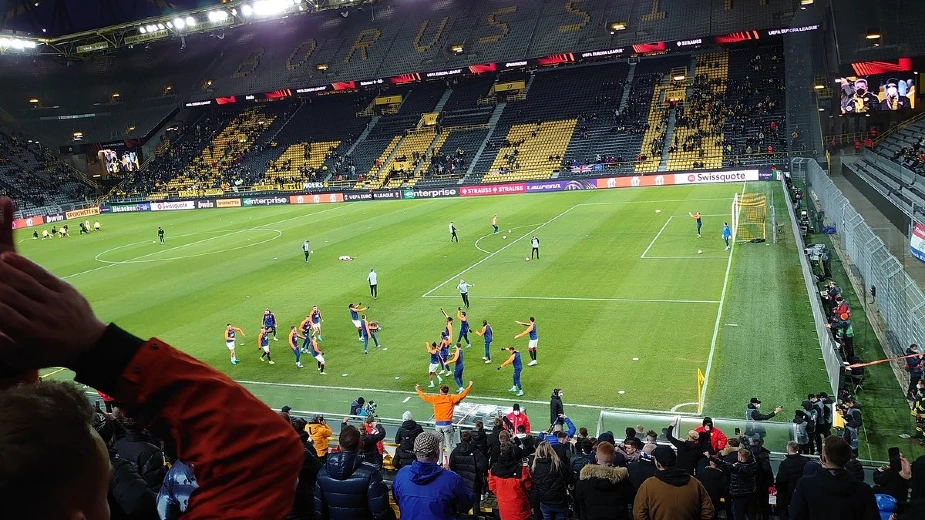
There’s nothing quite like the electric atmosphere of a live football match or a significant event at Santiago Bernabéu Stadium.
Check the schedule for upcoming matches or performances and secure tickets for an unforgettable experience.
The roar of the crowd, the cheers of fellow fans, and the magic of the stadium will leave an indelible mark on your memory.
Beyond Football
Santiago Bernabéu Stadium isn’t just a footballing cathedral; it’s also a world-class entertainment venue.
Over the years, it has hosted some of the biggest names in music, including U2, Bruce Springsteen, and Madonna.
The stadium’s facilities are ideal for large-scale concerts and events.
Its central location and excellent transport links make it popular for corporate events, conferences, and other gatherings.
Explore the Surrounding Area
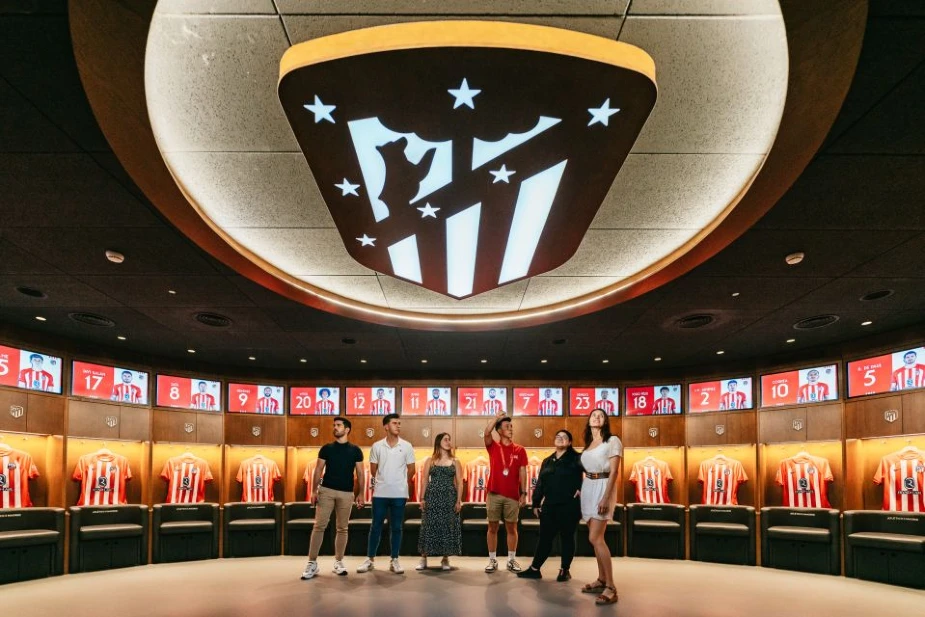
Beyond the stadium, the Chamartín district offers a wealth of attractions and dining options.
Stroll around the neighborhood, savoring the local cuisine and soaking in the vibrant atmosphere.
Remember to capture a few photos of the stadium’s iconic facade, a testament to its enduring legacy.
Santiago Bernabéu Stadium isn’t just a football venue; it’s a living legend.
Its rich history, ongoing transformations, and status as a cultural icon of Madrid make it a destination that transcends sport.
Whether you’re a devoted football fan or simply a traveler seeking to explore the heart of Madrid, Santiago Bernabéu Stadium invites you to become part of its storied legacy.
It’s a place where the past, present, and future merge to celebrate the beautiful game and the enduring spirit of competition.
FAQs
1. What are some facts about the Santiago Bernabeu Stadium?
The Santiago Bernabéu Stadium is located in Madrid, Spain, in the Chamartín district. It is the home stadium of Real Madrid, one of the world’s most famous and successful football (soccer) clubs. The stadium has a seating capacity of over 81,000 spectators, making it one of the largest football stadiums in Europe. The stadium was inaugurated on December 14, 1947, and was named after Santiago Bernabéu, a former player, coach, and president of Real Madrid Over the years, the stadium has undergone multiple renovations and expansions to enhance its facilities and capacity. The most recent major renovation was announced in 2019, which included plans to modernize the stadium. The Santiago Bernabéu has hosted numerous iconic football matches, including UEFA Champions League finals and FIFA World Cup matches. The stadium also houses the Real Madrid Museum, which showcases the club’s history, trophies, and memorabilia.
2. What is Santiago Bernabeu Stadium famous for?
The Santiago Bernabéu Stadium is famous for being the iconic home of Real Madrid, one of the world’s most renowned football clubs. It is known for hosting numerous historical football matches, including the UEFA Champions League finals.
3. Why does Bernabeu have a roof?
The Bernabéu Stadium has a roof to protect spectators and players from adverse weather conditions, ensuring matches can proceed comfortably. Additionally, it helps maintain the playing surface in optimal condition.
4. What is the most famous stadium in Madrid?
The most famous stadium in Madrid is the Santiago Bernabéu Stadium, home to the legendary football club Real Madrid. The other popular stadium in Madrid, besides the Santiago Bernabéu, is the Wanda Metropolitano Stadium, home to Atlético Madrid. It gained prominence for hosting major football events, including the UEFA Champions League final, and is an iconic venue in the city’s sports landscape.
Featured Image: Managingmadrid.com



